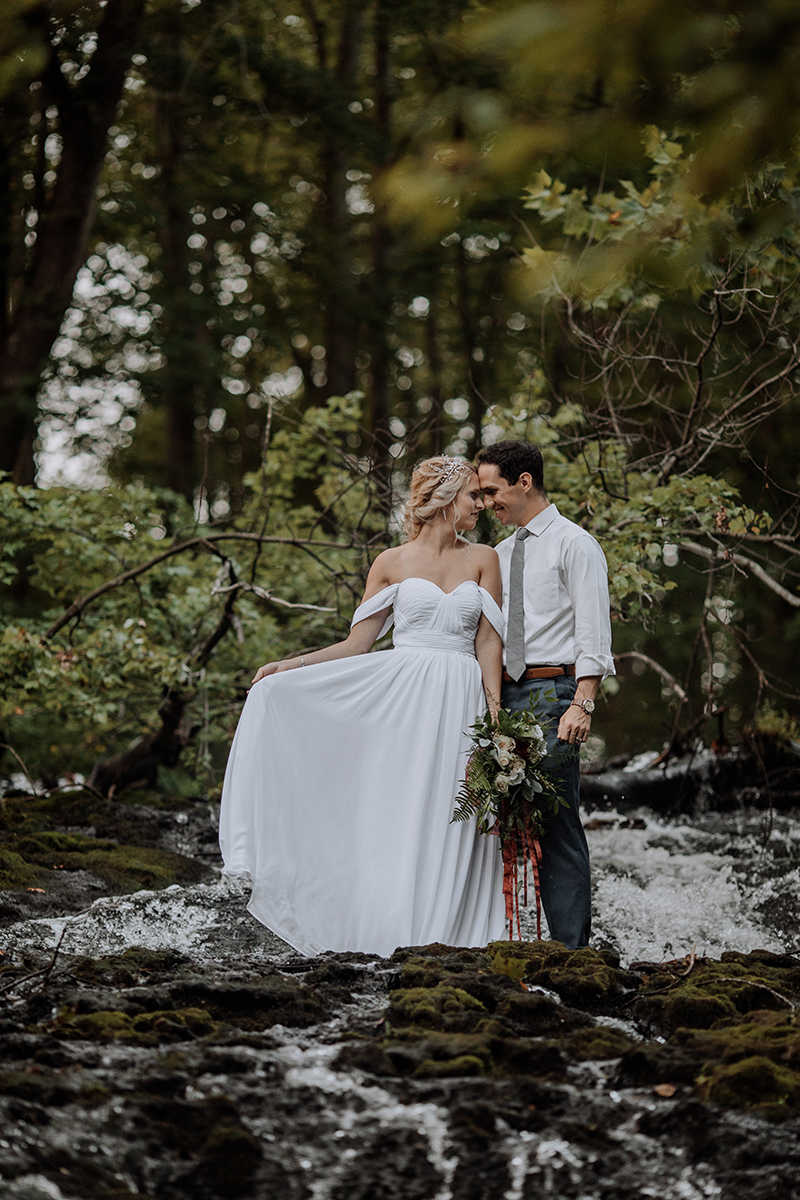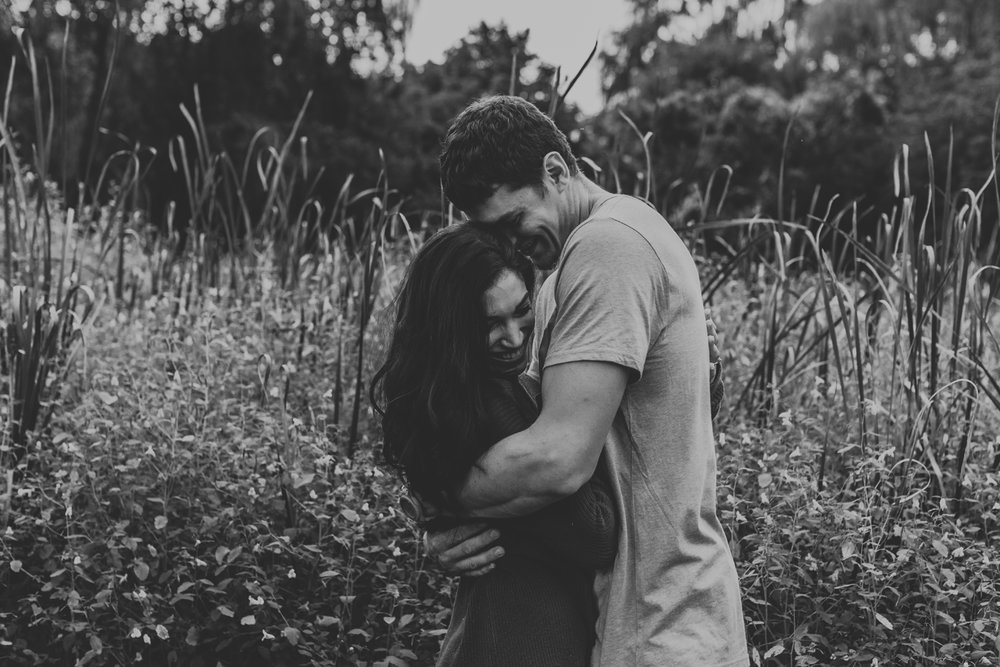
Making the decision to enter the photography industry is not to be taken lightly. It can be a very difficult challenge to grow your photography business, and have your voice heard. The reason for this is simple: there are many, many photographers out there.
These days, the bar for becoming a photographer is not very high. Some people believe that taking photos on their phone will be sufficient, so when it comes to cutting costs for a wedding, a bride + groom might decide to forgo a professional photographer in exchange for just having a family member or friend snap a bunch of a photos on their iPhone throughout the day. Even if this is more of an outlier situation, anyone can get professional gear with a moderate amount of money. With about $5,000, a person can get a pro camera body and a nice lens or two.
While your mileage may vary depending on your specific location, the photography market is quite saturated where we live in the Lehigh Valley. This is because our competition stretches beyond the limits of our immediate area into Philly and NYC.
Given that we have seen a good amount of success in our first year of running our photography business, we thought we would share with you some of our thoughts of how you can be competitive in the photography industry.
How to Be Competitive as a New Photographer in a Saturated Market
What are the characteristics of someone who is a good competitor?
Think about the best competitors in sporting events – they all tend to have certain attributes in common including, but not limited to, having a drive for success, having a good plan for how they will achieve their goal, a rigorous training routine, etc. While we tend to see big name athletes while they are playing their sport in front of huge crowds of people and televised audiences, much of their competitive edge is defined outside of these significant moments.
As a photographer, becoming competitive is dependent on figuring out who you are, and what you want to be, in your market. What is your voice? How do you want to be perceived by your clients? Do you want to represent something? There is an endless list of questions we could come up with just on this point alone.
you need to put in the effort to create success
A core element of your success will depend on how much time, effort, and resources you can put into your photography business to make it grow roots. It is critical to constantly be refining your technical and artistic skills as a photographer, and to have the right gear for the job – but these are only the tip of the iceberg.
One critically important thing some people underestimate is just how much time is needed to fulfill your professional photography business dream. If you’re plan is to take your business full-time, it is essential that you be willing and able to put in the time required.
While working for yourself has it’s perks, having downtime is not always an option.
Aside from taking a 10 day trip to Iceland in September 2017, we both have worked around the clock on our day jobs and photography business during the evenings and on the weekends. This work ranges from the exciting – like meeting new clients, and shooting engagement sessions and weddings – to the more mundane like balancing our accounting spreadsheet, writing out contracts, and editing photos for hours on end.
You need to learn how to attract new clients, and sell them on the idea of you
Perhaps more important as a small business owner is learning how to make yourself attractive to others. For some, this comes naturally. Some people are naturally charismatic. For others, this may be more of a challenge.
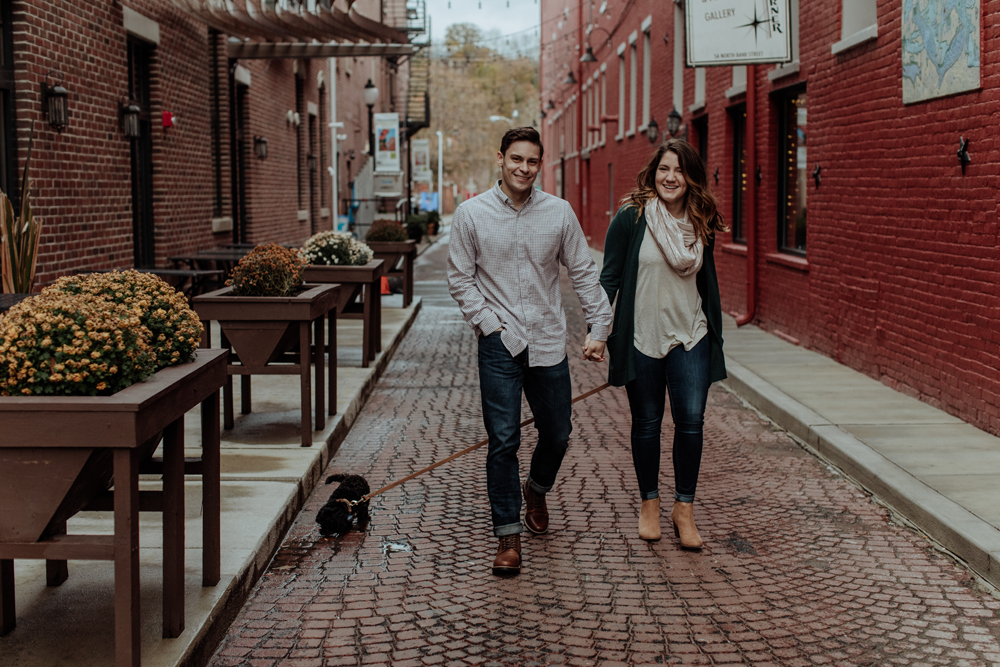
We are generally fairly reserved people who like our quiet and alone time – one of our aims is to live in a house in the woods. We know many other photographers who are just starting out might be similar – it is one of the appeals of photography as a hobby – a means of expression and communication that doesn’t require talking endlessly. However, being quieter does not mean we lack charisma.
We are capable of branding ourselves in a way that is comfortable to us, and attractive to a certain audience. We provide a certain level of comfort to our clients who might otherwise feel anxious about standing in front of a camera – as has been exemplified through client testimonials we have received. We make efforts to remind ourselves what it feels like to be photographed.
All of these little things add up – all of the self-realizations and business goals we may have. Compiling these thoughts into a digestible About page provides a nice starting point for new clients who find their way onto your website. The About page is of critical importance when it comes to selling your photography services, because the About page sells you as the photographer.
In the majority of instances, once we receive an email from a prospective client inquiring about their wedding day or wanting to book a session, we have an easy sales opportunity. This person has more than likely taken at least a small amount of time to review our photography style, our consistently updated portfolio, and read a little bit about us before sending that first email.
Making the sale is now just all about figuring out the details – so send a few emails back and forth, and have a phone or in person meeting. It’s really a simple process that too many people over complicate.
Get to know and work with photographers in your area
It is our sense that running a business like a cutthroat operation where you need all the clients, and other businesses in the area go bankrupt, is a thing of the past. There is substantial value on many levels that comes from growing good relationships with other people who are photography professionals, not to mention other vendors that you may interact with during a wedding day such as makeup artists, musicians/DJs, food vendors, etc.
Early on, we learned a significant amount about the technical aspects of photography, as well as attracting clients, leveraging social media to get more inquiries, posing, and more from other photographers in our area. Some of these lessons were learned just through chatting through Facebook Messenger, and others were learned by photographing styled shoots, meeting others for coffee, and even the fortune of Jes being featured in Elaine Zelker’s Photography Challenge.
The social aspect of the photography industry will significantly aid in your ability to to thrive. One extra perk (that is in no way expected, but appreciated) is that often when days are booked on their calendars, they will refer clients to us. We have booked a handful of couples this way! We have also done the same in sending people to other photographers when a day was already booked as well – so remember – it is a two way street.
Have the right gear for the job
Let us preface this section by first saying, there isn’t inherently “right” or “wrong” gear when it comes to photography. The beauty of this art form is that a really good artist can make the best of even beginner level gear.
Based on our experience, there are a few significant considerations that need to be mulled over before deciding just what gear you are going to buy.
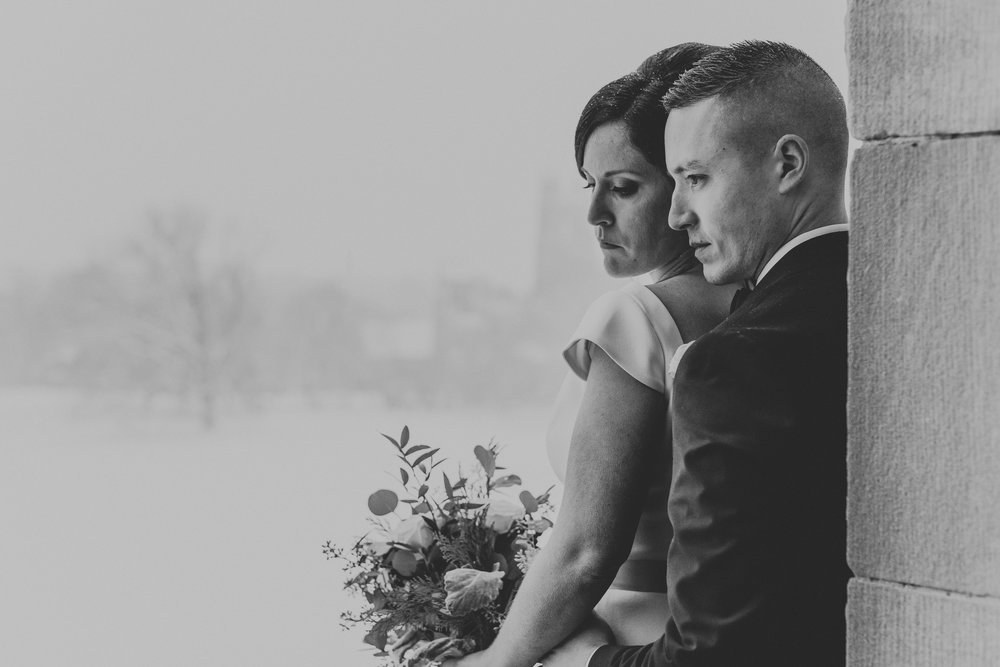
- Are you wanting to photograph corporate events and weddings? If yes, you will need more equipment than, say, a portrait photographer.
- Are you going to be shooting in a static environment all the time (like a studio), or in consistently changing or unpredictable environments? If you’re in a studio where you can easily control the lighting, you won’t have to worry about having certain equipment necessary to handle changing weather or light levels outside.
- Do you want to be a “natural light only” photographer? “Natural light photography” sounds really pretty, but in practice the term is really impractical – especially when shooting weddings or other events where you do not have total control over the timing of things (like when bride & groom portraits will occur), the environments they will happen in (ceremony in a dark church with stain-glass windows?), or the weather (mother nature is the most unpredictable of all sometimes). While this style of photography is possible in some instances, being adaptable to use flash setups will help you to capture beautiful moments in imperfect lighting situations.
With these thoughts in mind, let’s consider some of the equipment we use for shooting engagement sessions, portraits, and weddings (from the getting ready photos all the way to the end of the reception).
Note: In the following section, we will be listing some of the equipment we actively use – most of which is Canon brand. There are certainly other brand options out there like Nikon, Sony, and Olympus (just to name a few), and there is a lot of good in the products put out by these companies as well. We settled on Canon based on our research, and have been very happy with the results we are getting!
Also contained below will be some affiliate links to Amazon, which will provide an immediate point of reference so you can see what specific products we are talking about and using. In addition, we want to let you know that if you make a purchase through any of these links, we make a small commission at no cost to you. If you find this information to be useful, please consider using these links for your purchases if you do decide to invest in any of this equipment.
Our Photography Gear starter List – bodies & lenses:
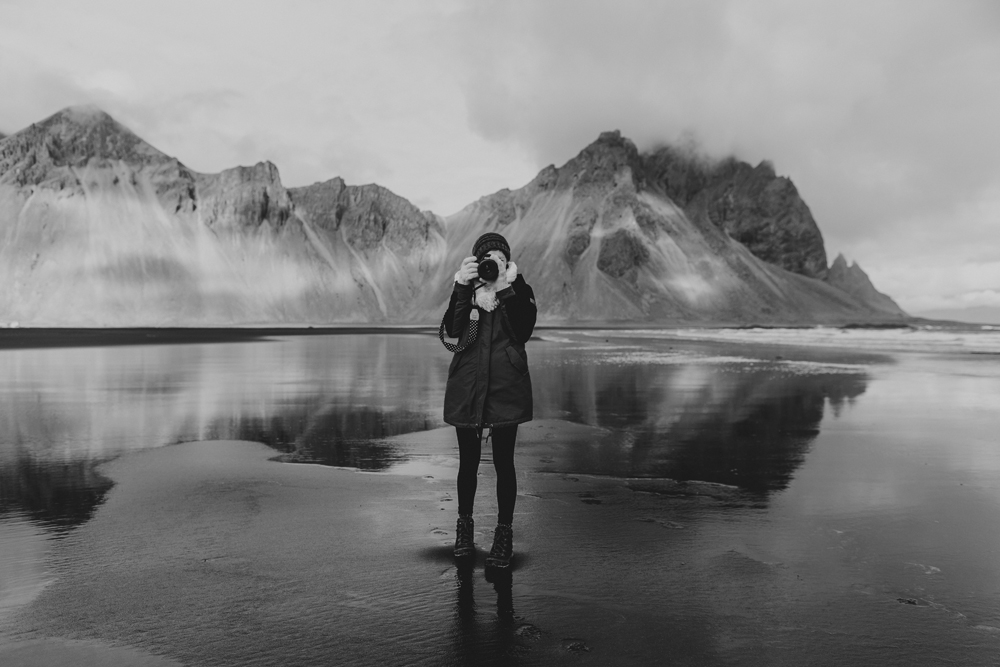
Everything that follows is gear that we personally own, frequently use, and actually like.
We are working to put together a more detailed guide with ALL of the gear we are using including camera bodies, lenses, flashes and their setups (on camera and off camera), accessories, etc. The bodies and lenses shown below should provide you with a great starting point if you are looking to upgrade to more professional level equipment.
- Camera Bodies
- Canon 5D Mark III
- Canon 5D Mark IV
- Both of these trusted professional level camera bodies perform exceptionally well for our needs. One of the main features of both, and what really distinguishes them from lower costing Canon camera models, is their performance in low light. Back in the day, we used the Canon Rebel – a great starter camera, but poor performer when bumping the ISO up was required in low light. The fact that we can move the ISO up to 1,000+ before having any substantially visible grain that can potentially ruin photos is a great asset when shooting in those uncontrolled environments.
- Both of these trusted professional level camera bodies perform exceptionally well for our needs. One of the main features of both, and what really distinguishes them from lower costing Canon camera models, is their performance in low light. Back in the day, we used the Canon Rebel – a great starter camera, but poor performer when bumping the ISO up was required in low light. The fact that we can move the ISO up to 1,000+ before having any substantially visible grain that can potentially ruin photos is a great asset when shooting in those uncontrolled environments.
- Lenses:
-
Canon EF 24mm f/1.4L II USM Wide Angle Lens
-
This 24mm lens is essential for us to capture wide shots during wedding ceremonies, receptions, or on location somewhere with a large building, tall trees, or mountains that we want to be able to capture nicely in the frame.
-
We have also had great success capturing some interesting close up photos with this one as well, making it a really useful piece of glass to have along. We use it at just about every session and wedding!
-
-
Canon EF 50mm f/1.2 L USM Lens
-
The 50mm is really a “standard” of our photography style. During most sessions and weddings, Jes is usually using this lens for a large portion of the day. The reason for this is because the focal length is perfect at being close, but not to close – which means that getting the perfect shot framed is as easy as taking just a step or two forward or back.
-
This particular lens is a prime example (no pun intended) of seeing a significant quality change when purchasing a higher priced lens. Prior to purchasing this one, we used the Canon EF 50mm f/1.4 USM Standard Lens – which is actually a really great lens for the cost.
-
The main differences? This is night and day to our trained eyes. The EF 50mm f/1.2 L has much more clarity (images are sharper), the color is much richer, and the depth of field is far more impressive and reminiscent of looking at a watercolor painting at times. Having the ability to shoot at f/1.2 also makes us nerd out.
-
-
-
Canon EF 85mm f1.2L II USM Lens
-
This 85mm was one of our more recent purchases, and has really started to become Chris’ favorite lens. The compression and bokeh in photos is incredibly beautiful, making for some really intoxicating portrait opportunities. In addition to this, a big appeal is that the distance between the shooter and the subject is not very far – making it easy to still speak at a normal volume to give some direction for posing and interacting with our couples.
-
-
-
Our first longer lens, and it is another thing of beauty. Of all our lenses, this one probably sees the least use right now, but we are still happy to have it when the time arises that it could come in handy.
-
What is the best time for using this lens? This lens is excellent when placed in an environment where having a large distance between yourself and the subject is necessary. There are instances where giving a couple space may be wanted, and being able to step back and capture some beautiful portraits with this is great.
-
Alternatively: We used this lens prior to purchasing the EF 70-200mm (below) for shooting ceremonies that where it was necessary to keep some distance from the couple – such as in a large Catholic church where we wanted to keep some space so as to not be a distraction. For situations like this on a tighter budget, this may be an excellent option.
-
-
-
-
Canon EF 70-200mm f/2.8L IS II USM Telephoto Zoom Lens
-
Carrying this lens around feels like carrying a small child. The biggest gripe many people have is it’s weight, and it is significant compared to the other lenses on this list. With that said, we do not find it to be too bad, and Chris’ has shot for extended periods of time without a problem.
-
This lens is just filled with great features, so many that it makes it hard to imagine that we could have ever worked without it. Let’s talk about a few!
-
It is a zoom lens, and can be manually manipulated to zoom from 70 to 200mm. This makes it great to use in a lot of situations. Too far from the subject? Just zoom in. Too close? Take a step back and shoot at 70mm. It is really simple, and in some situations, very fun to experiment with different focal lengths as a means to getting a new composition in seconds.
-
The built-in image stabilization is a life saver. While it can sometimes be hard to keep this lens steady due to its size, the image stabilizer works very well and in most cases I do not see any poor resulting images from camera shake.
-
The compression is excellent for an f/2.8. When shooting photos on the fly without the ability to change lenses quickly (like during a wedding ceremony), this is just perfect. During a more relaxed session, depending on the light and other variables, we may take this one off in exchange for some of the smaller and static focal length lenses like the 85mm or 135mm so we can utilize their lower f-stops (which helps to explain why you would want to consider having all these in your collection) – but in general, this does the trick!
-
-
-
-
Conclusion
There is a whole lot that goes into becoming a successful and competitive photographer.
It sometimes feels like the stars need to be aligned just right in order to have some success yourself, but the reality is much simpler. In our experience, the key really boils down to two simple things: invest in yourself and in relationships with your peers and clients, and provide a service that is distinctly you.
With Hand and Arrow Photography, we have taken a big risk and a leap of faith to put ourselves “out there.” We are not usually people who care for the spotlight – it’s why we’re photographers and not professional models. We are behind the camera, not usually in front of it 🙂
